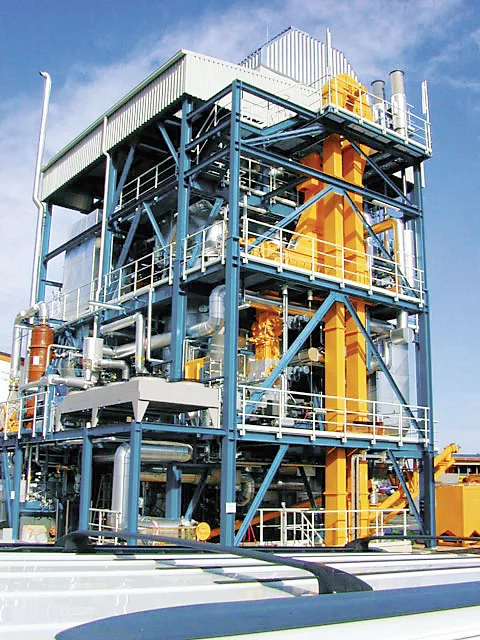Wood was the most important source of energy for thousands of years. Today, it is used primarily for heating, although the demand for heating energy is decreasing and health-damaging particulate matter is produced by the burning of wood. However, the extraction of energy from wood has the advantage that it is CO2-neutral, because new trees absorb the resulting CO2. Furthermore, there is enough suitable wood available in Switzerland to satisfy a few percent of energy demand.
Natural gas from wood – versatile and environmentally friendly
Together with colleagues at the Technical University of Vienna, scientists at the Paul Scherrer Institute have now developed a process that converts wood into synthetic natural gas, which can be fed into the public gas grid. This means that energy from wood is available, for example, for generating electricity in gas-fired power plants or for powering gas-driven vehicles. The PSI researchers have, in particular, contributed to the second stage of the process. In this stage, the combustible raw gas which is generated directly from wood, but which is not yet suitable for the gas grid, is converted in a catalytic process into methane – the main constituent of natural gas.
Test plant in Güssing (Austria) – from lab to application
The process, which was initially developed in the laboratory, will now be tested on an industrial scale in a test plant at Güssing in Austria, which delivered pure methane for the first time in December 2008.
In addition to the production of natural gas from wood, scientists at PSI are working on another process for the production of natural gas, this time from wet biomass – for example, from agricultural waste or sewage sludge. Here they have developed a process in which the biomass can be used directly without having to be dried beforehand – a step which in other processes would itself consume energy.
The process
In the process of generating methane from wood, wood chips are first turned into gas using hot vapour. The combustible components of the gas are predominantly hydrogen, carbon monoxide and methane, plus higher hydrocarbons (tars). This gas is purified (by the removal of sulphur compounds) and then, using a nickel catalyst, converted into a mixture of methane and CO2 in the methanation step developed by PSI. The gas from the methanation step is then processed to natural gas quality by CO2 separation. In technical plants, gas generated in this way (known as synthetic natural gas, or SNG for short) can be produced with a gross efficiency of more than 60 %. In the medium term, there is potential for improving the efficiency further by optimizing the gasification/methanation process. In addition to SNG, the process also produces waste heat as an additional commercially useful product, which can be used to generate electricity, to meet the demand for industrial heat or to feed district heating networks. The total efficiency can thus be increased to more than 80%, which is important in ecological and economic terms.
The work is being carried out by a Swiss-Austrian consortium involving the companies Repotec Umwelttechnik GmbH (Vienna) and CTU – Conzepte Technik Umwelt AG (Winterthur) – as well as PSI and the Technical University of Vienna.
Further information
- Wood – A versatile, renewable energy resource
JournalEnergie Spiegel
No. 16 (2006) - Bioenergy and Catalysis Laboratory

